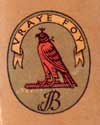June 2004
Monthly Archive
Thu 17 Jun 2004
Posted by boz under
PhysicsComments Off on Gravity vs. Quantum Theory
For the past century there have been two incompatible theories on how the universe works:
Gravity (courtesy of Einstein’s general theory of relativity) and
Quantum Theory (used for the other three fundamental forces of nature: electromagnetism and the strong and weak nuclear forces ).
Both work ok, except in extreme environments (like inside a black hole). So, scientists are looking for a good theory of Quantum Gravity. The problem is that relativity wants gravity to be continuous, while quantum theory wants it grainy.
Thu 17 Jun 2004
Posted by boz under
Molecular BiologyComments Off on Gene Therapy
In gene therapy, you insert a therapeutic gene into a “disabled” retrovirus (a vector). The vector is then used, e.g., to infect bone-marrow stem cells from a patient, and the cells are then re-injected into the patient. The hope is that they will multiply into (in this case) normal immune cells. This was used to treat 10 kids in France in 2000-2002. However, 2 of the 10 developed leukemia-like conditions.
The ability of the viruses to insert themselves into DNA was also why they were able to activate a cancer-promoting gene (an oncogene).
Thu 17 Jun 2004
Posted by boz under
ComputingComments Off on Software and Languages
Interesting article in a March issue of Science by Alfred Aho (Columbia University). He points out that “few people appreciate the importance of software–until it breaks!”. He estimates that hundreds of billions of lines of code are running systems in the world (corresponding to trillions of dollars invested). This also corresponds to an estimated 5 million to 50 billion defective lines of code…
While “it is unlikely that humans will ever write software with zero defects”, a major area of study is how to make more reliable software systems.
See:
abstract
Thu 17 Jun 2004
Posted by boz under
PhysicsComments Off on Fermat’s Last Theorem
The French mathematician Pierre de Fermat died in 1665. A note found in the margin of his textbook Arithmetica declared he had found a proof for his theorem that xn + yn = zn has no solutions where n is a whole number greater than 2, but did not have room to write it down. The proof was finally found by the Cambridge mathematician Andrew Wiles in 1993.
« Previous Page
